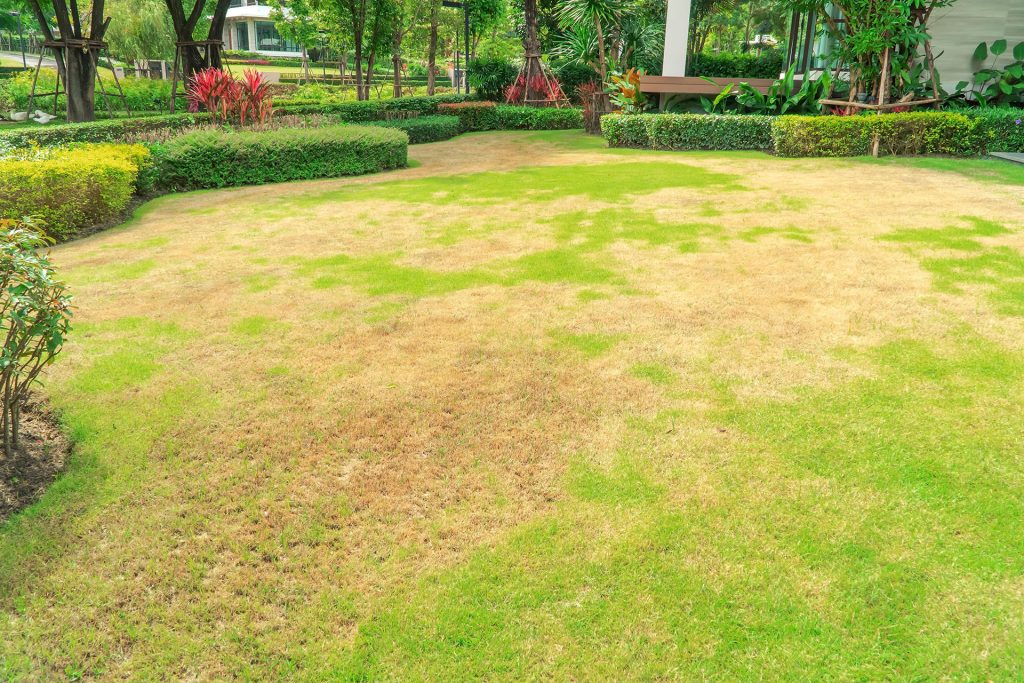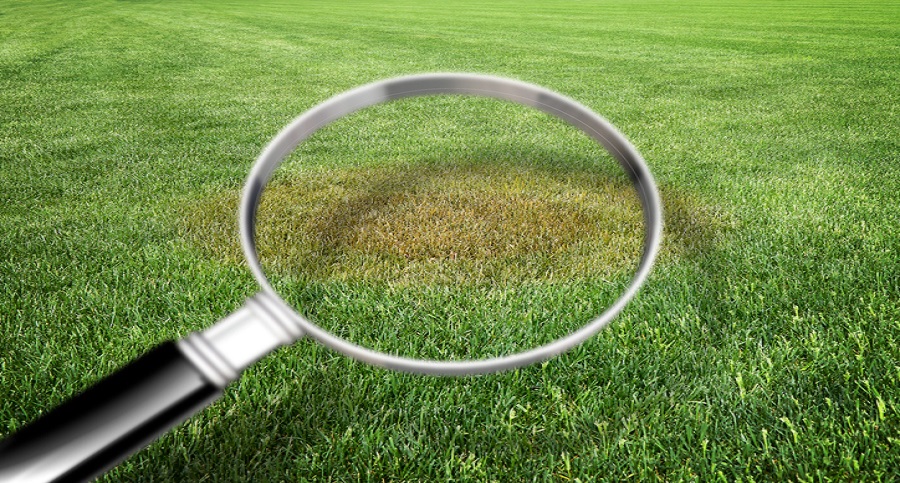Yellow patch is a disease that attacks many lawns every year between late fall and early spring. This unattractive disease will spread yellow or light brown spots throughout your once-green grass if you don’t control it. Yellow rings or patches in your lawn could indicate necrotic ring disease or yellow patches.
Table of Contents
Why Does My Lawn Have Yellow Spots? Causes and Remedies
Have patches of yellow appeared on your once lush green lawn? There could be several causes for these yellow spots in your grass. Don’t scratch your head any longer over the yellow patches in lawn; we know the culprit! Here are a few causes and solutions to consider if you notice a little or significant area of yellowing on your lawn.
Dryness

Extreme heat or portions of your lawn that are in whole light all day can quickly dehydrate the grass. Damage and discoloration to your property are inevitable results of this heat.
Watering the grass regularly and sincerely, preferably first thing in the morning, so it has all day to dry, is one way to combat dry conditions. The fall is an excellent time to reseed a damaged lawn or garden.
Extreme N2O
Over fertilizing and dog urine are potential sources of too much nitrogen for your grass. It is impossible to have thick, healthy grass without adding nitrogen, a chemical that promotes the growth of green, leafy vegetation. Turf that has been over-fertilized with nitrogen may turn yellow because of chemical burns to the grass’s roots and an alteration in the soil’s pH.
Since its heavy in nitrogen, dog urine can also leave scorch marks on your lawn. The entire middle of a urine spot burns the roots and causes discoloration. At the same time, the diluted margins nourish the grass (like fertilizer), explaining why urine spots are commonly surrounded by greener grass.
Disease
Fungi cause most turf illnesses that leave yellow patches in your grass. Your lawn’s susceptibility to fungus depends on several factors, including temperature, thatch, and moisture. Diseases caused by fungi are widespread, with fairy rings, snow mold, fusarium, and smut being some of the most frequent. As well as explore organic weed control methods
Dethatching and aerating your grass can help keep it free of disease-causing fungi. It’s best to water first thing in the morning so the moisture may evaporate during the day and not pool in the soil all night. If you don’t want moisture to pool under the grass or the leaves, rake them up.
Pests
Small insects that feed on the grassroots can also discolor your lawn. By separating the grass blades, you can use a magnifying glass to look for larvae or insects in the thatch. It is typically the juvenile stages of a pest’s life cycle that cause damage to the grass.
Once you’ve pinpointed the specific insects that are wreaking havoc on your grass, you can employ a pesticide that will effectively rid your lawn of them. Reducing thatch, irrigating correctly, and applying sufficient fertilizer can also decrease bug numbers.
Repairing the yellow patches
The yellow spots on your lawn could have several potential explanations, so it’s time to investigate. Place a finger on the grass in the yellow area of your yard.
The soil needs aeration if it is excessively damp
Add some water if it’s parched. When you do this, your grass’s roots will extend deeper into the earth in search of water, making it more resilient to dry spells. Watering heavily once weekly is preferable to light watering multiple times per week.
A lack of nourishment may be to blame for that yellow spot if the soil isn’t too damp or dry. Use a high-quality slow-release fertilizer and do this.
Conclusion
The grass is essential to us. Thus we take great care of it. That ideal little patch of green grass in the front yard adds instant curb appeal, and in the back, it creates a relaxing and social gathering spot. Why do those unsightly patches of yellow grass always seem to appear when we need them to be gone the least?
Problems with diagnosing the cause of yellow patches in lawns are widespread. The good news is that this post is all about doing just that: turning those barren, yellow areas into lush, verdant ones. We’re confident that this article will help you.



